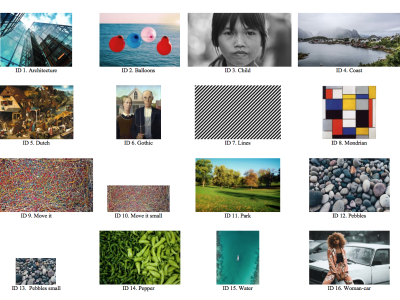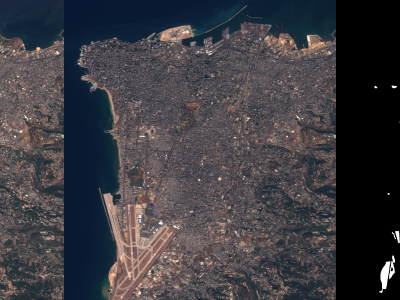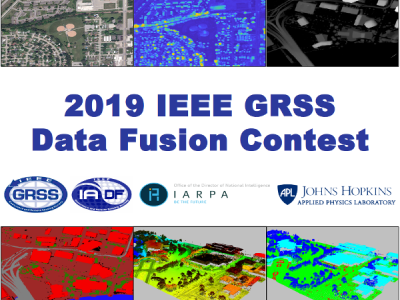The performance of image quality measures and spatial frequency information for visual complexity assessment

- Citation Author(s):
- Submitted by:
- Dorukalp Durmus
- Last updated:
- DOI:
- 10.21227/4efq-9649
- Data Format:
- Research Article Link:
Abstract
The dataset consists of subjective evaluations of 44 naive observers judging the visual complexity of 16 images. The subjective judgments were done using a 5-point Likert-type scale with a neutral midpoint. The items in the scale were “very complex,” “complex,” “medium,” “simple,” and “very simple.” The order of the images was randomized for every participant.
Spatial complexity properties of the images used in the experiment are quantified using nine spatial complexity measures: GIF, JPEG, root-mean-squared error, fractal D, entropy, spatial frequency information slope, suprathreshold detectability Rspt, and edge detection algorithms (Canny-GIF and Sobel-GIF).
Instructions:
DATA_subjective_evaluations.xlsx consists of subjective evaluations of 44 naive observers. Observers judged the visual complexity of 16 images using a 5-point Likert-type scale. The items in the scale were “very complex,” “complex,” “medium,” “simple,” and “very simple.” You can convert the data by allocating a number to each item (e.g., very complex =5, complex=4, and so on).
DATA_comp_measures.xlsx consists of the image complexity measures for nine metrics.
For more details refer to the publication: Durmus, D. (2020) Spatial frequency and the performance of image based visual complexity metrics. IEEE Access.
 282 views
282 views







